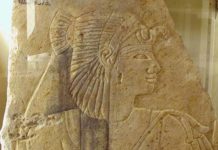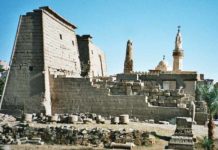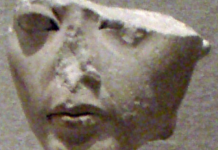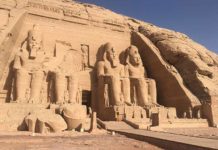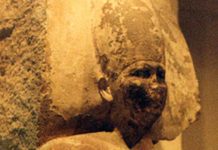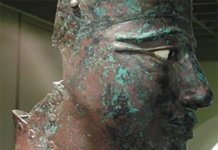Ancient Egyptian religion seems to be based on an obsession of death, but it can also be seen as a desire to live. Their main goal? Immortality.
At first glance, the ancient Egyptian religion seems to be abnormally obsessed with death. As a culture they appear to have worshiped the dead. So much emphasis was placed on mummification and tombs that, without further perusal, that does seem like a reasonable assumption. That space in time brings to mind grand burials and golden relics languishing in dusty tombs. We envision the desiccated faces of the wrapped pharaohs; we imagine the embalming process, overseen by the intimidating visage of Anubis, the jackal-headed god of death.
Obsession with Death?
Even though much of their religion was rooted in death, the ancient Egyptians were actually infused with a vitality and vibrancy that is made apparent in their art, their literature and the accounts of their family lives. This is particularly true during the New Kingdom. They were preoccupied with death because of their strong desire to live.
The ancient Egyptians wanted life to continue, just as it was, in the afterlife. It wouldn’t do to leave it to chance, so every effort was made to insure that they were able to continue “living” just as they had before. The afterlife was to become an extension of their current lives. In a sense, one could live forever, if one’s name never died. They were searching for immortality in a both a figurative sense and a literal sense.
Ancient Egyptian Gods and Goddesses
The Egyptians had a way of combining the factual and the metaphoric in their religion. It was a religion that relied heavily on symbolism, yet at the same time was rooted in reality. A spiritual, otherworldly being was assigned for nearly all of the earthly happenings in the world. Sunrise would only happen when Ra rode his boat out of the Underworld and across the sky. He then journeyed across the sky, and back down into the Underworld. Only then would the sun set.
The Underworld was seen to be full of peril and the sunrise was never guaranteed. Fortunately, Ra was often accompanied by other gods, including Set and Mehen who helped defend against the creatures Ra might come up against. Then there was Nut, the sky goddess, dressed in a cape of stars, who swallowed Ra up nightly, to bring the darkness. Geb was the god of the earth, Tefnut was the goddess of moisture and Shu was god of the air. The Egyptians worshiped a number of minor and major gods, each one with a very specific purpose.
The upper tiers of the godhood also included the more well known of the Egyptian Gods; Osiris, Isis, Horus and Set. Osiris, after being brutally dismembered by his brother Set, was brought briefly back to life by his wife, Isis. He became the god of the Underworld. Isis was goddess of motherhood and fertility. Set was god of chaos and Horus was god of protection. Set and Horus fought and after Horus triumphed, he became the ruler of the living world. Each Pharaoh became his living incarnation.
Afterlife and Immortality
The journey to the afterlife and judgment was fraught with danger and more literal interpretations. The deceased’s heart was weighed on a scale opposite a feather worn in the head-dress of Maat, the goddess of balance. Thoth the god of wisdom, recorded the results. If it balanced, they were free to enter eternal life. If it didn’t, they were immediately devoured by Ammit, the monster of the dead.
As time went on, the gods grew and adapted. Some merged and some disappeared altogether, but one thing remained throughout the Old Kingdom to Cleopatra’s time: the Egyptian civilization placed a lot of significance on death. But through death, came immortality.
Sources:
- Time Life Editors Lost Civilizations Egypt: Land of the Pharaohs published by Time Life Books, Richmond, Virginia 1992
- Time Life Editors What Life Was Like on the Banks of the Nile published by Time Life Books, Alexandria, Virginia 1997



